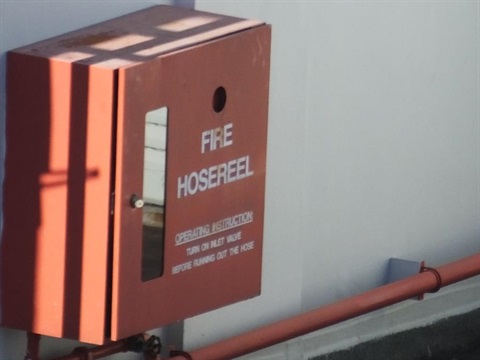Fire safety for developments

Commercial and industrial
The installation of fire safety measures in commercial and industrial buildings is required by the Building Code of Australia and enforced under the Environmental Planning and Assessment (Development Certification and Fire Safety) Regulation 2021. Council may also require additional measures for life or property safety.
An Interim/Final Fire Safety Certificate must be submitted to Council before occupancy of a new building or after completion of works required by a Construction Certificate.
Building owners must also submit an annual Fire Safety Statement to Council, and display a copy of the interim/final Fire Safety Certificate and Annual Fire Safety Statement within the building and forward an electronic copy to Fire & Rescue NSW.
A list of fire safety measures can be found under Part 10 of the Environmental Planning and Assessment (Development Certification and Fire Safety) Regulation 2021.
When is a building or premises subject to these requirements?
All Class 1b and 2 to 9 buildings, which are subject to development approval for a change of use, Construction Certificate, Complying Development Certificate or a Fire Safety Notice or order by the Council, are automatically subject to essential fire safety requirements.
New buildings
A Fire Safety Schedule will be issued with the Construction Certificate or Complying Development Certificate or a Development Consent where no building works are required. The Fire Safety Schedule will list the essential fire safety measures that are to be installed in the building or on the land. A Fire Safety Certificate must be issued prior to the occupation of a building.
Existing buildings
Older buildings may not currently have fire safety requirements, but may be subject to them in the future via development consent, Construction Certificate or fire safety order.
Building owners/managers must submit an Annual Fire Safety Statement to Council every year, certifying that the measures listed in the most recent Fire Safety Schedule are still installed and up to standard.
The statement, issued by an accredited fire practitioner, must be sent electronically to Council, the NSW Fire Brigade, and be prominently displayed in the building. A fee is required when submitting the statement in accordance with Council's fees and charges.
Failure to submit the statement may result in penalties. Contact the Fire Safety Officer on (02) 6625 0500 for more.
How do I find out what is installed in my building?
Upon approval of a development for Class 1b and 2 to 9 buildings (as defined under the Building Code of Australia) a Fire Safety Schedule is issued (generally with the Construction Certificate). This Fire Safety Schedule lists all the essential fire safety measures that are currently existing or are to be installed in the building and the performance standard to which each of those measures must be capable of operating.
What should I do now?
It is important that building owners are aware of their fire safety requirements. Failure to comply with the requirement is an offence and the owner could be liable for substantial penalties.
If you are a building owner or manager you should make arrangements to ensure your building is inspected and certified by a qualified person and an Annual Fire Safety Statement is submitted to Council annually.